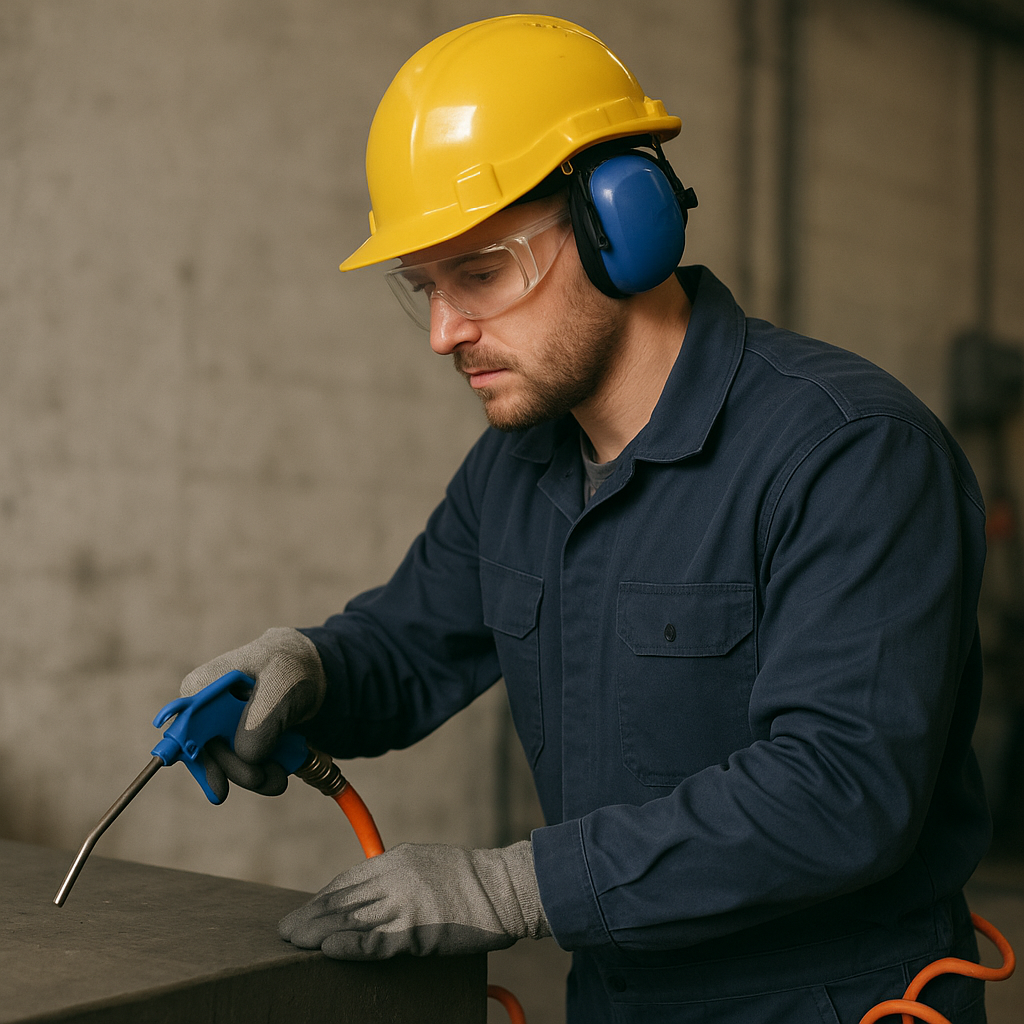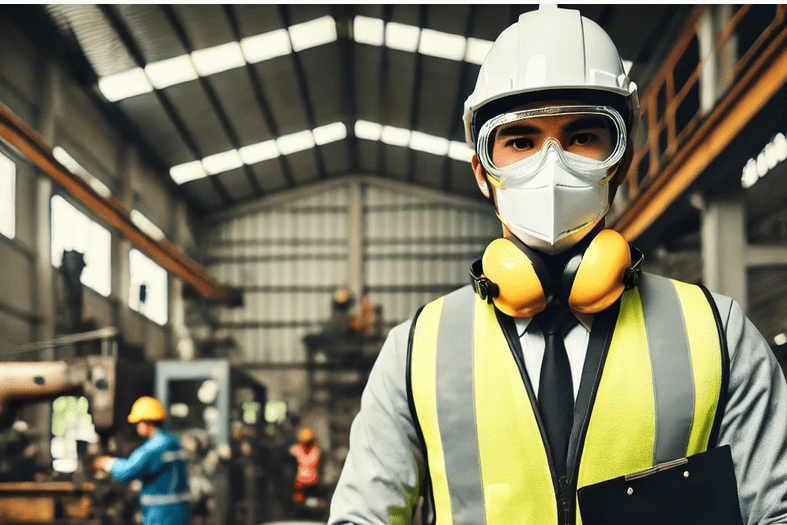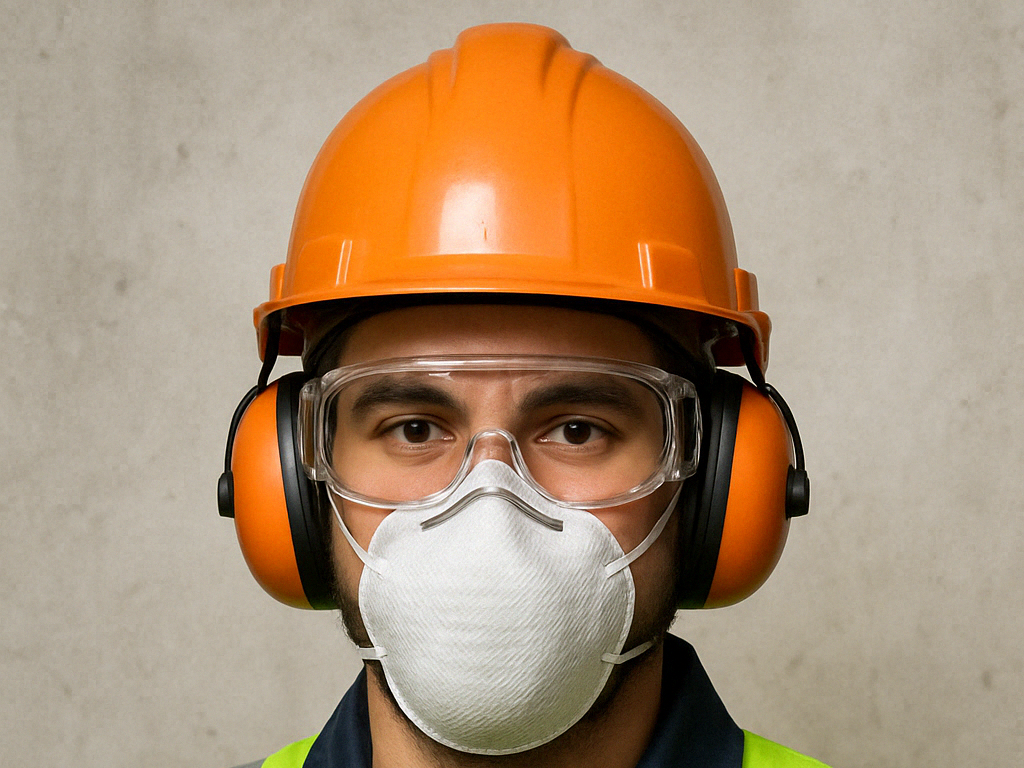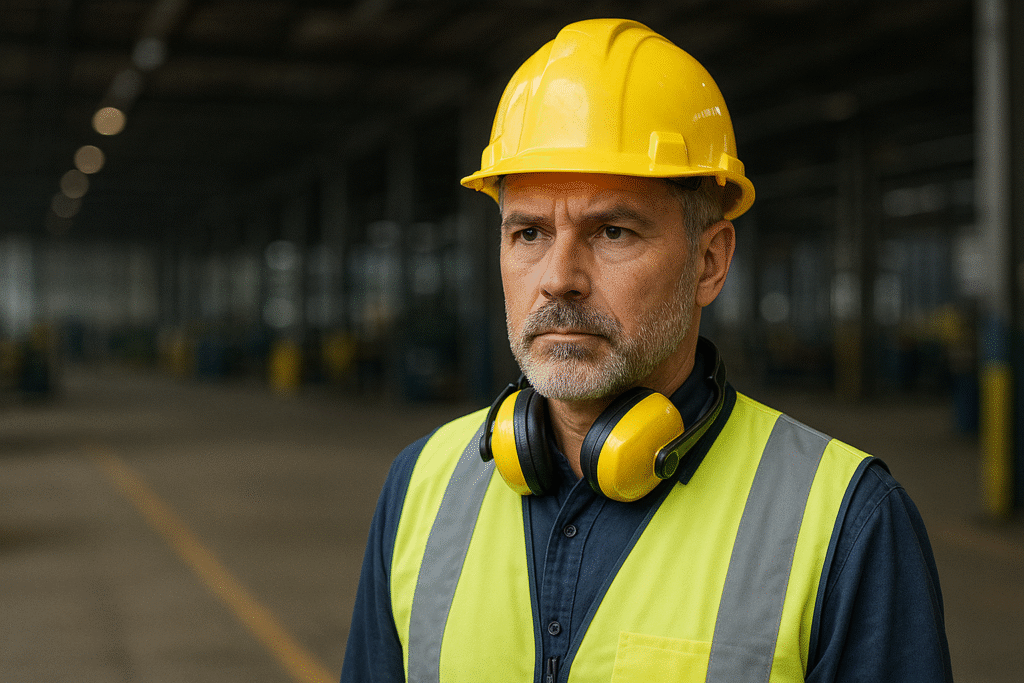Hidden Risk of Compressed Air : Compressed air is a powerful tool in many industrial environments—but its danger is often underestimated. From cleaning debris off machinery to powering pneumatic tools, compressed air is widely used.

Yet, the hidden risk of compressed air can result in life-altering injuries, many of which occur silently and without warning.
What Makes Compressed Air Dangerous?
Unlike fire or falling objects, compressed air hazards are often invisible and inaudible. The danger lies in the high-pressure release of air that can pierce skin, damage internal organs, or even inject foreign materials into the bloodstream. What seems like a harmless “blast” can become a medical emergency in seconds.
The air emerging from a compressor often exceeds 100 psi (pounds per square inch)—far above what is safe for direct contact with the human body.
Injuries That Happen Without a Sound
When we talk about the hidden risk of compressed air, we’re highlighting injuries that may not involve visible trauma or dramatic accidents. Some of the most serious risks include:
1. Air Embolism
A blast of compressed air entering the bloodstream can cause an embolism—a blockage of blood vessels that can be fatal. This can happen even through minor skin breaks or mucous membranes.
2. Internal Organ Damage
Air forced into body cavities such as the ears, nose, or rectum (often due to horseplay) can cause ruptures, organ damage, or death. These injuries may not be immediately apparent.
3. Eye and Ear Injuries
Tiny airborne particles propelled by compressed air can lodge in the eyes, while the sudden pressure change can rupture eardrums—even if ear protection is worn.

4. Skin Penetration and Infection
Compressed air can drive oils, solvents, or particles into the skin, leading to deep-tissue infections. These injuries can look like minor bruises but may require surgical intervention.
Common Misuses of Compressed Air
Despite safety training, compressed air is often misused because it appears harmless.
Some common and dangerous misuses include:
- Cleaning clothing or skin: Workers using compressed air to blow off dust or dirt can accidentally inject air into the skin or eyes.
- Horseplay: Many severe injuries occur when workers play with air hoses.
- Improper nozzle pressure: Using nozzles without pressure regulators can lead to dangerously high-force air jets.
According to OSHA, compressed air used for cleaning must be regulated to under 30 psi and must include chip guards and proper PPE to prevent injury.
Source – OSHA Standard 1910.242(b)
Real-Life Example: A Silent Injury
In one case reported by Canadian Centre for Occupational Health and Safety (CCOHS), a worker used compressed air to blow dust off their overalls.
The air pressure drove dust particles and lint into the worker’s skin, leading to a serious infection that required hospitalization. The injury appeared minor—until symptoms escalated within 48 hours.
Safety Measures: How to Use Compressed Air Safely
The best way to address the hidden risk of compressed air is to implement and follow strict safety practices:
🔧 Use Approved Equipment
- Always use nozzles with pressure regulators and safety tips.
- Ensure hoses are rated for the correct pressure.
🧤 Wear the Right PPE

- Safety goggles, face shields, gloves, and hearing protection are essential.
- Ensure chip guards are in place when cleaning equipment.
🚫 Ban Air for Personal Cleaning
- Never use compressed air to clean skin or clothing.
- Provide alternative cleaning methods like vacuums or safety-approved blowers.
📋 Train and Enforce
- Conduct toolbox talks on the proper use of compressed air.
- Reinforce that horseplay with air hoses is a zero-tolerance issue.
⚠️ Label and Post Warnings
- Display signs at compressor stations and air outlets.
- Use clear signage that warns of air pressure hazards.
External Resources
- OSHA – Compressed Air Safety Standards
- CCOHS – Compressed Air
- NIOSH – Occupational Hearing Loss Prevention
- SafeWork Australia – Compressed Air Safety
These are DoFollow links that lead to credible safety agencies, enhancing both worker knowledge and SEO value.
The Role of OHSE Professionals
Occupational Health and Safety professionals must proactively address compressed air safety by:
- Including it in risk assessments.
- Monitoring nozzle pressures during audits.
- Designing engineering controls that minimize exposure.
Even though these injuries may occur without sound, the consequences can echo for a lifetime.

Conclusion: The Hidden Risk of Compressed Air
The hidden risk of compressed air lies in its invisibility. Unlike more obvious hazards, compressed air injuries don’t always scream for attention—but they can be just as deadly.
With proper awareness, training, and controls, you can prevent life-altering injuries that occur silently. Don’t let the quiet nature of compressed air lull your team into complacency.
Respect the pressure, enforce the rules, and always prioritize safety.

No comments yet